Leaves glitter with raindrops as we walk under a canopy of verdant greenery. The Karamana river, in full spate, can be heard raging about 750 metres below. The air is redolent with fragrances of soil, leaves, spices and flowers. Creepers, branches and leaves brush against us as we make our way around this tropical Eden. Butterflies glide among the ixora, making the most of the weak sunshine, a green frog hops under a stone, and a fat brown millipede moves forward busily.
The first Miyawaki forest at Puliyarakonam, Thiruvananthapuram, after four and a half years.
| Photo Credit:
SPECIAL ARRANGEMENT
As I make my way around Miyawaki Nature Lab, Gayathri Nair, my guide for the day, shows me the variety of plants that have greened this once barren hill within six years.
When MR Hari, CEO of Invis Multimedia, sold his ancestral property in 2007, he invested it in a hillside plot of two acres near Puliyarakonam, nearly 15 kilometres from Thiruvananthapuram; it was once planted with Acacia. The monsoon had denuded the area of its topsoil and no amount of tree planting helped in arresting the water from draining away from the hillside. Hari recalls planting 500 saplings every year only to see them wither away as the rocky and pebbly red soil could not retain water.
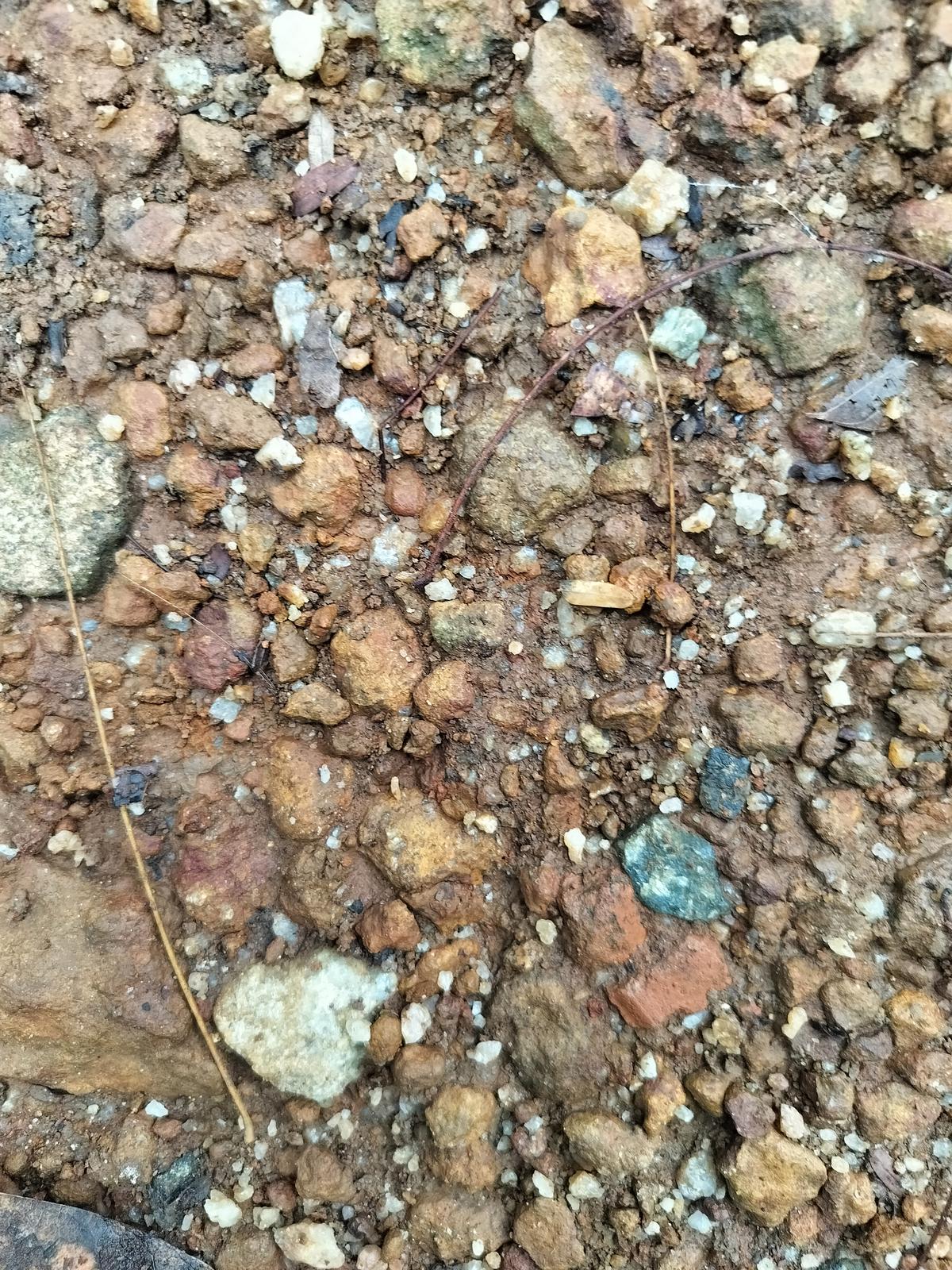
Initially, place at Puliyarakonam was filled with pebbly, red soil that could not hold water and most of the plants withered away.
| Photo Credit:
Special arrangement
He says blasting at a quarry on the other bank creates tremors that disturb the water table in the region. “The little water retained used to drain away through small cracks in the rocky bed that occur due to the blasting,” he adds.
Hari began rearing cows and hens to see if the land could be fertilised with organic manure — he was clear that he did not want to use chemicals.
In 2015, Hari came across a video on Miyawaki planting, a method of restoring forests pioneered by Japanese botanist Akira Miyawaki. He had spent a lifetime specialising in restoring degraded land by growing native vegetation.
The Miyawaki model
Saplings of indigenous plants of different varieties, comprising trees, bushes and shrubs are planted together to maintain bio-diversity. According to the model, the densely planted saplings compete for sunlight and grow quickly, creating a green cover.
So, in 2017, Hari began experimenting with the Miyawaki model on a small plot on his property. He was helped by Dr. Mathew Dan, a soil scientist, Cherian Mathew, a farm journalist, and Madhu, Hari’s farming assistant.
Instead of planting saplings directly in the soil, they were first nurtured in soil bags till they grew to about two feet and developed roots. Those were planted in the soil. “Moreover, we installed wire nets to support the trees, put up a green shade to protect the young plants from direct sunlight during summer and installed drip irrigation,” explains Hari.
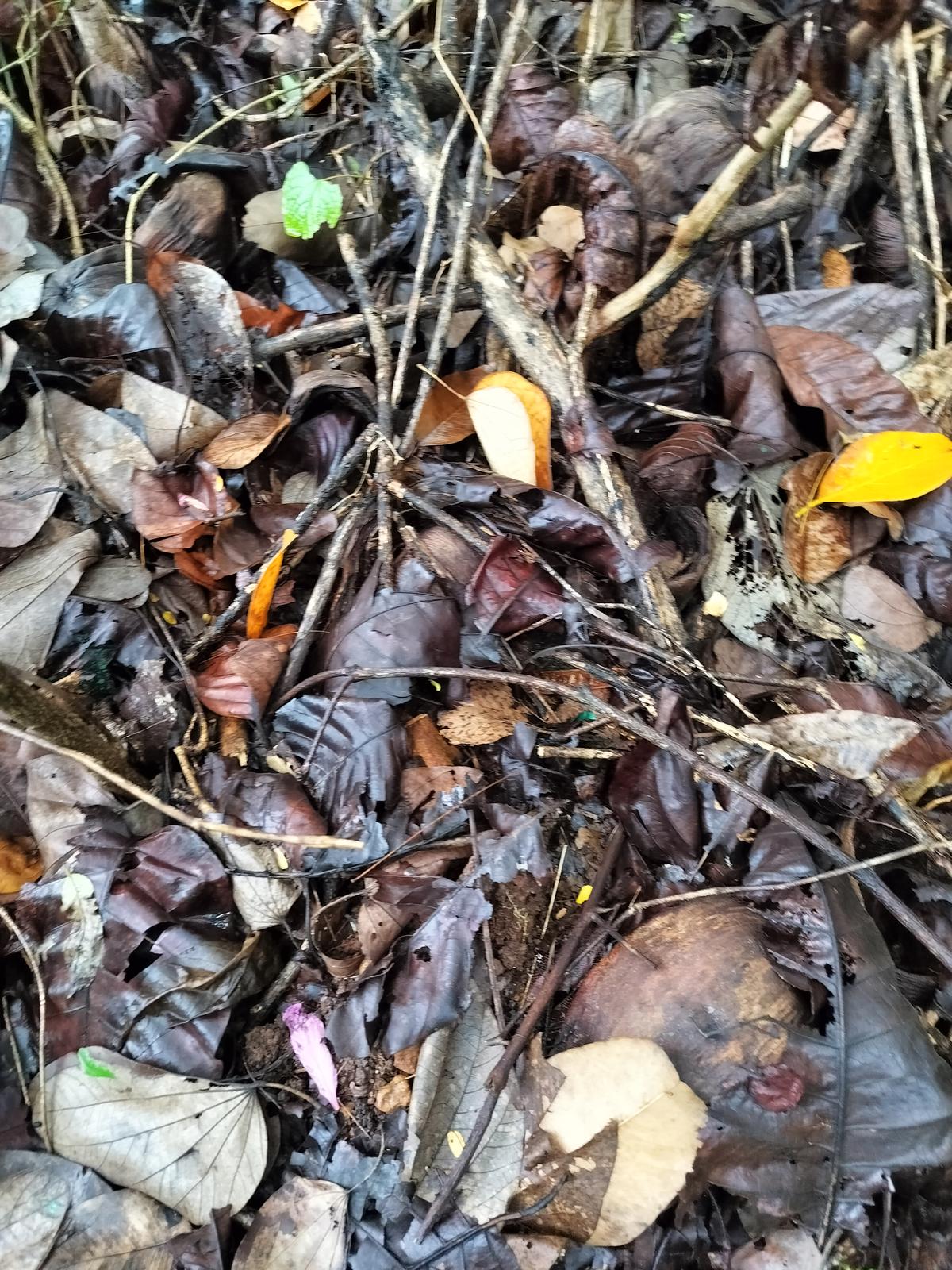
The replenished soil at Miyawaki Nature Lab, Thiruvananthapuram.
| Photo Credit:
Special arrangement
Thrilled to notice the change in the growth of the plants, Hari travelled to Japan to meet Miyawaki in 2019, who was then in his nineties. “I was able to connect with his team. They travelled to Kerala and advised me on the system of planting advocated by Miyawaki.”
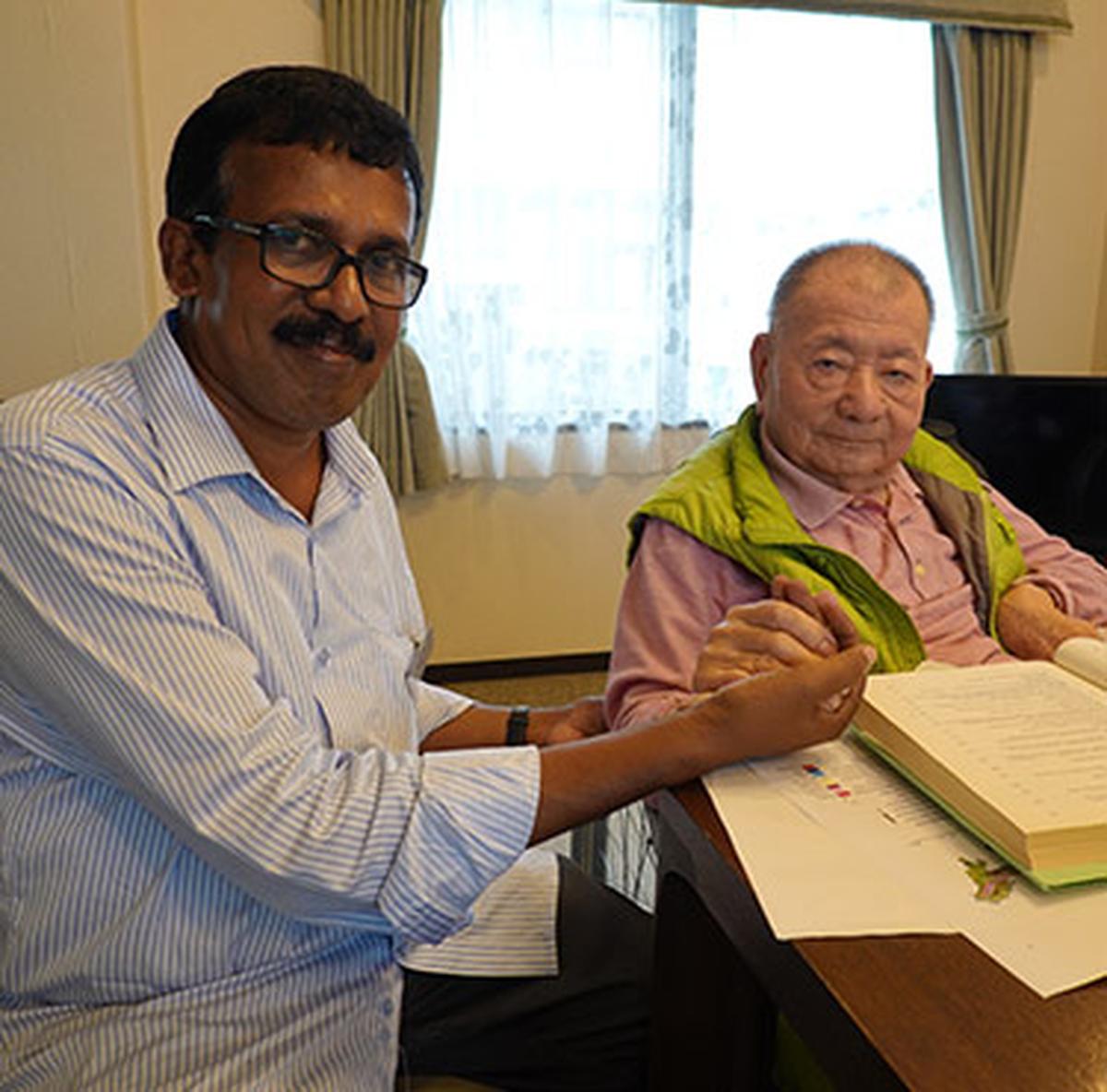
MR Hari with Akira Miyawaki.
| Photo Credit:
SPECIAL ARRANGEMENT
He knew that it would be exorbitant to implement the model on his entire plot. Instead, small plots were selected and those were densely planted, at the rate of four saplings in a one-square metre plot. “Although Miyawaki recommends only three, we tried four and it worked. Through this method, we rejuvenate the soil. Miyawaki believes that forests nurture pesticides to protect themselves and also attract predators that feed on the pests. Leaves, insects, bird droppings etc enrich the soil. I have clicked approximately 500 kinds of insects in the park,” elaborates Hari.
Boring holes in the rocks, he planted sapling there to see if they would take root. The thriving plants imbued Hari with confidence that discarded quarries can also be turned into micro forests that can prove to be green lungs for the surrounding areas.
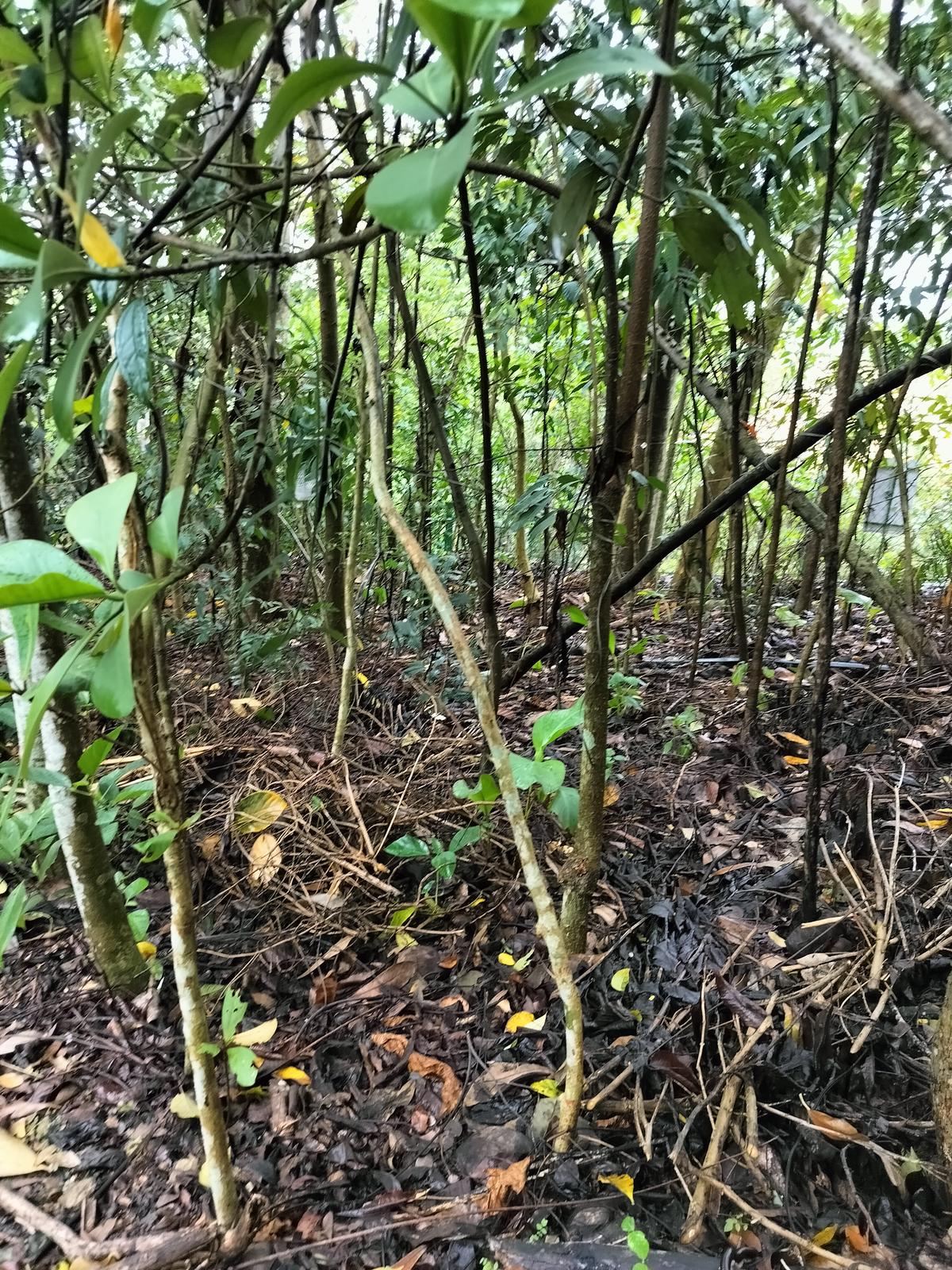
Miyawaki Nature Lab
| Photo Credit:
Special arrangement
On the same plot, Hari has added a tank for fish farming too. He was able to replicate the model on select private plots across Kerala and also help them plant forests that focus on trees with medicinal values, herbs, native flowering plants etc. In addition, ten Miyawaki forests were planted in different kinds of surroundings in Kerala under the auspices of the Kerala Development and Innovation Strategic Council. These included micro forests in urban areas, in coastal areas and residential areas.
“According to the Miyawaki model, there is a native ecosystem and if we plant foliage that attracts local varieties of insects and birds, it gradually enriches the soil and the environment. For instance, unless we have plants that cater to butterflies, we will not be able to attract birdsand insects that might feed on the larvae of the butterflies, including pests. When we go in for mono plantations, an entire ecosystem gets disturbed,” says Gayathri.
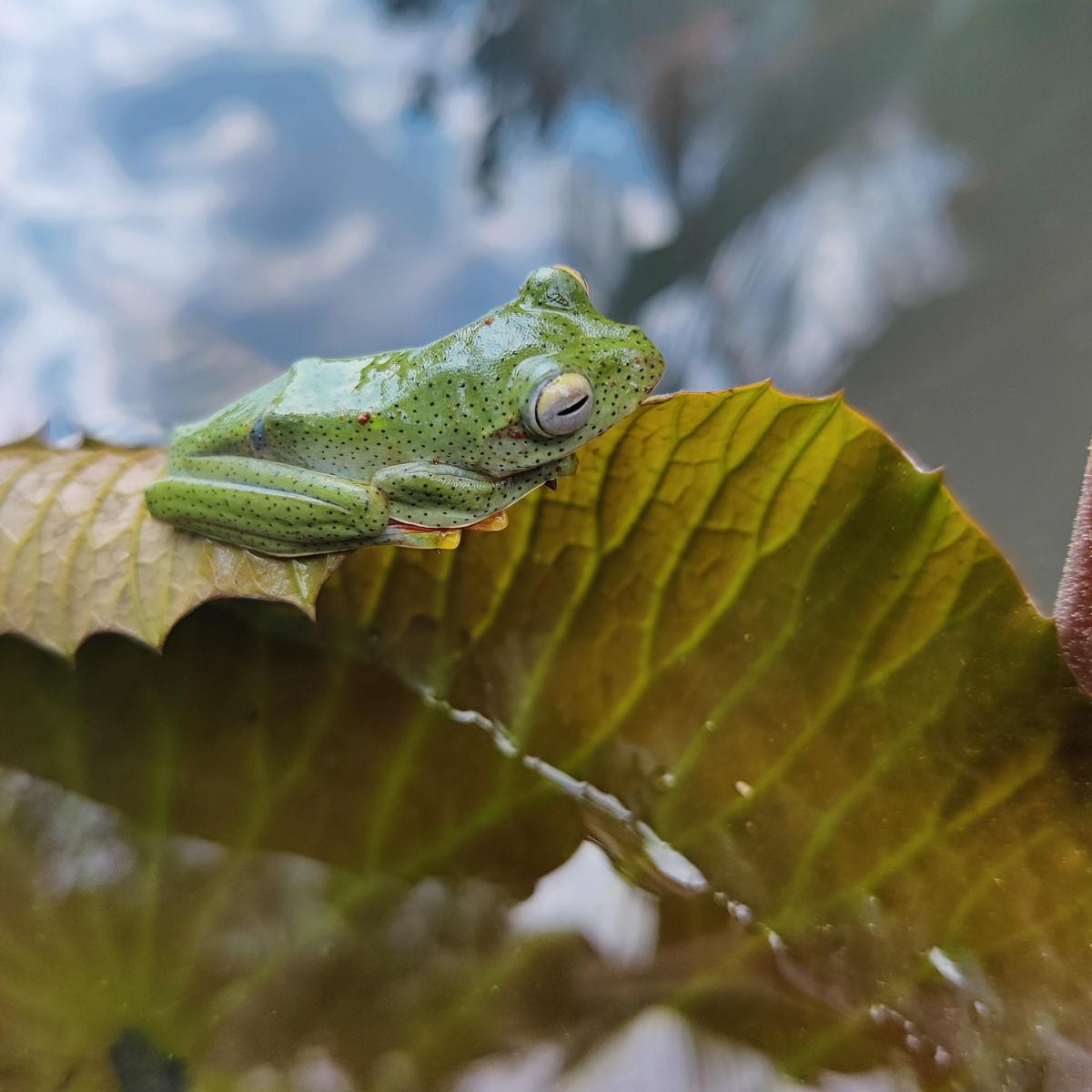
A frog at the Miyawaki Nature Lab in Thiruvananthapuram.
| Photo Credit:
Special arrangement
Hari believes that these micro forests are apt to combat climate change and urban micro forests could be a powerful tool to check water logging, rising temperatures and bring back Nature to concrete jungles.
“I call this place a nature lab because it is an ideal place for students and those interested in the environment to see how the soil changes. I plan to conduct a five-day hands-on-training programme to show how the soil gets depleted and how it can also be replenished naturally by the plants that have grown there.”
In addition, groundwater gets recharged once there is forest cover and roots to hold the soil together.
Batches of students from Kerala and Karnataka have come to study how the barren place has been transformed.
Aware that there are strident critics of the Miyawaki method, Hari travelled across Japan to see the growth of forests that was around 50 years old. He says he was impressed with how the forests had not just survived but thrived and made an impact on their surroundings.
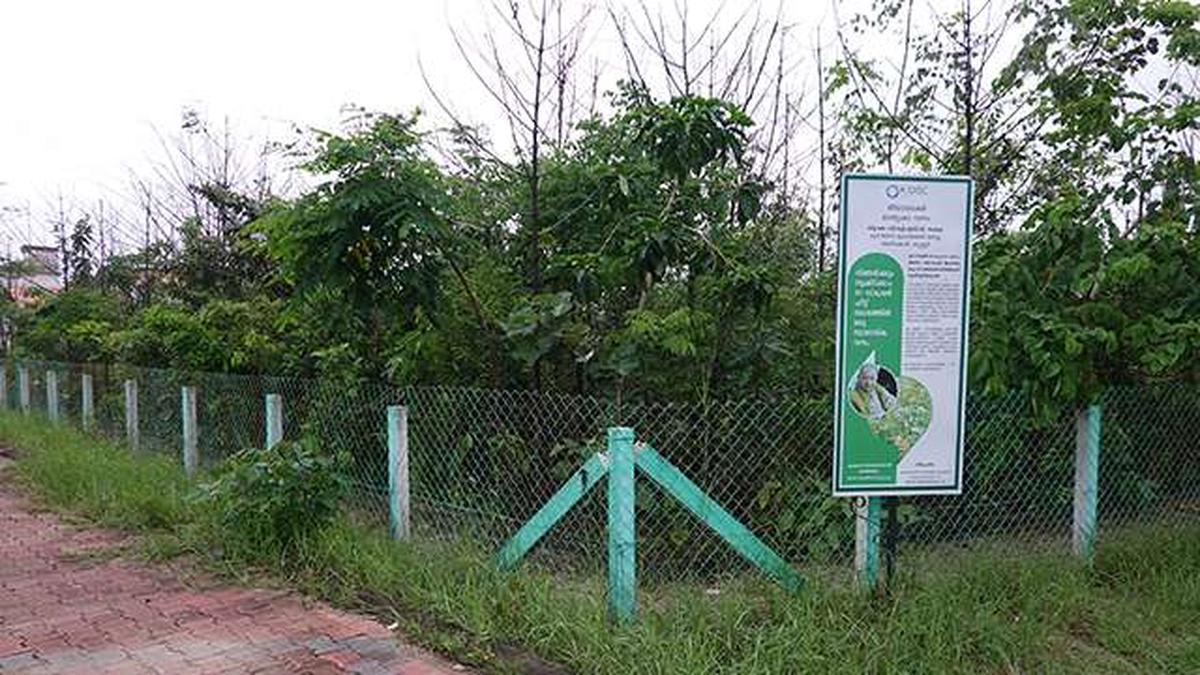
Miywaki forest at Munakkal beach, Alappuzha.
| Photo Credit:
SPECIAL ARRANGEMENT
Hari was selected as consultant of the United Nations Convention to Combat Desertification. ‘”I am part of a mission to plant Miywaki forests in one million schools all around the world. We also planted one on the premises of the Kudankulam Nuclear Plant in Tamil Nadu and is on a mission to create such micro forests in Rajasthan, Orissa and Maharashtra,” he elaborates.
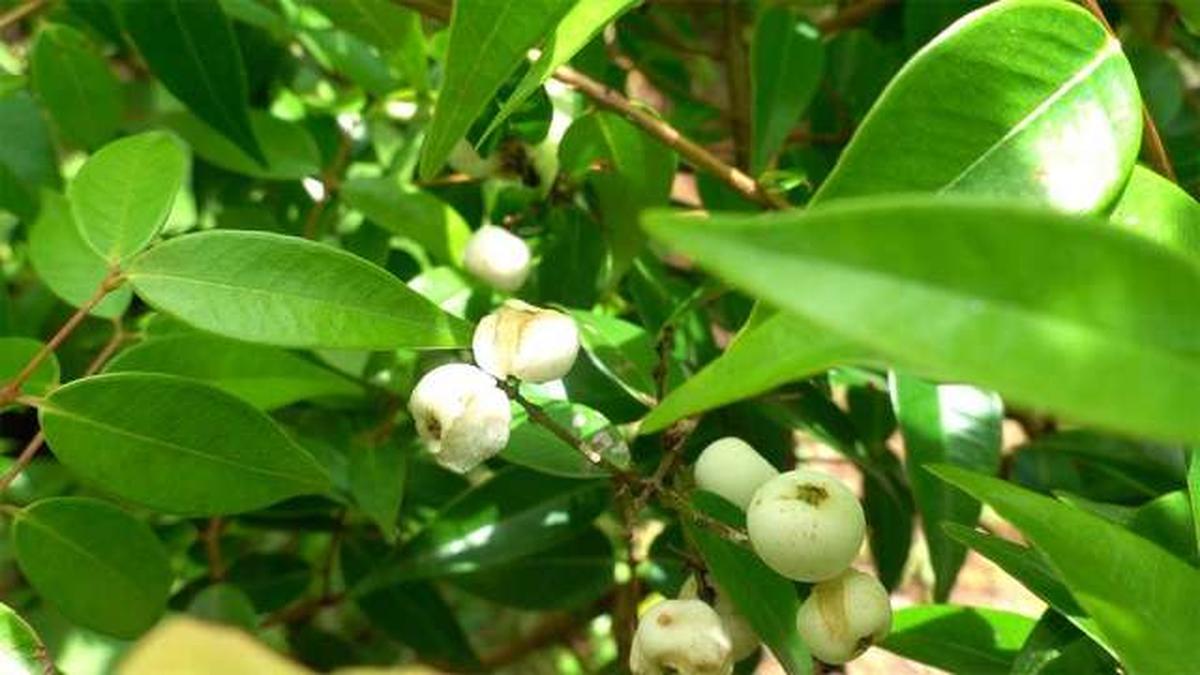
Miyawaki fruit forest at Kanakkary, near Ettumanoor, in Kottayam district.
| Photo Credit:
SPECIAL ARRANGEMENT
This is in addition to 150-200 such forests in Kerala. He believes that if residents create one- to two-cent forests within their plots, groundwater can be recharged in cities. He asserts that such Miyawaki forests that choose local plants can help restore rivers and protect coastal areas.





